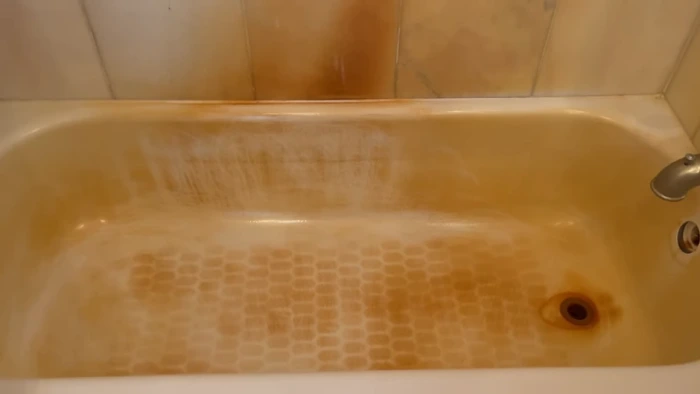Last Updated on November 14, 2023
Calcium buildup in bathtubs can be annoying and unsightly. It not only looks bad but can also make it difficult to clean your tub effectively.
Give your tub a top-notch makeover with simple, natural ingredients. Clean up existing calcium buildup and deter more from forming by using everyday items like vinegar or limescale remover.
Keep your home sparkling with these safe, easy-to-use cleaning solutions. We’re here to help with four simple methods to clean your tub and some tips on preventing any pesky blockages in advance.
How To Clean Calcium Buildup In Bathtub: 4 Effective Methods
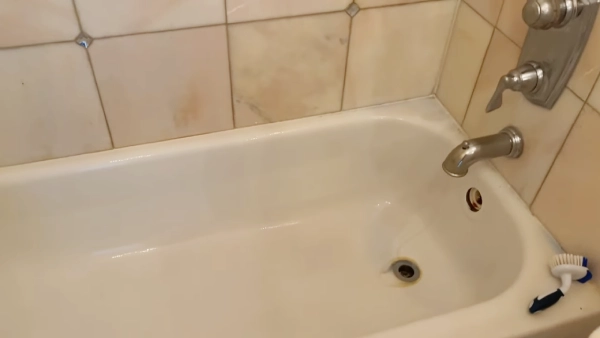
Calcium buildup in bathtubs is a common problem faced by many homeowners. There are 4 easy solutions that can help you clean and remove the calcium buildup, restoring the beauty of your bathroom.
Method 1: White Vinegar for Light Calcium Buildup
Introducing white vinegar as a way to clean calcium buildup in the bathtub is an easy and cost-effective solution. White Distilled Vinegar has been used as a cleaning tool for many years due to its natural acidity and powerful properties.
Step 1: To use white vinegar to get rid of light calcium buildup in the bathtub, you will need to mix one part of distilled white vinegar with three parts of warm water in a spray bottle.
Step 2: Begin by spraying the cleaning solution on the walls of the tub, shower walls, and fixtures. Let it sit for approximately 30 minutes or overnight for best results.
Step 3: Once ready, take a soft cloth, damp rag, or paper towel and scrub down areas affected by hard water stains until they disappear.
Step 4: Make sure to then dry off all surfaces with a cloth or towel when finished.
Method 2: Dish Soap with Vinegar for Medium Calcium Buildup
Using dish soap with vinegar is another efficient way to effectively remove medium calcium buildup from your bathtub without having to resort to harsher chemical solutions.

Step 1: Fill up a spray bottle with hot water and add about one teaspoon of dish soap and some white vinegar into it.
Step 2: Spray the mixture onto any areas of your bathtub where calcium deposits are present and let it sit overnight or for 15 minutes to 30 minutes.
Step 3: Afterwards, take a cloth and start gently scrubbing down all affected areas until the buildup starts dissolving.
Step 4: Wash away any leftover residue with hot water and dry off all surfaces once done.
Method 3: Baking Soda with Vinegar for Thick Calcium Buildup
Baking soda and vinegar is another great option when it comes to tackling thick calcium buildup in your bathtub. This method can be very effective, and all you need is baking soda, white vinegar, a sponge or cloth, and a clean towel. Directions:

Step 1. Take the baking soda and white vinegar and mix together to form a paste.
Step 2. Apply the paste to the area of the calcium buildup and let it sit for 12 hours or overnight.
Step 3. Use a non-abrasive sponge to scrub away the paste and calcium buildup.
Step 4. Rinse the area with fresh water and dry with a clean towel.
Method 4: Limescale Remover for Heavy Calcium Build Up
For heavy calcium build up, the best way to remove it is with a limescale remover. It works quickly and effectively on minerals, lime, calcium, and rust stains and requires no scrubbing. The following steps will provide detailed instructions for removing calcium buildup with a limescale remover.

Step 1: Prepare the area. Make sure the surface you are working on is clean and dry before beginning. If there is any dirt or debris present, clean it up with a clean cloth or towel.
Step 2: Spray the limescale remover onto the affected area, ensuring that all of the hard water stains are covered. Allow it to soak into the surface for several seconds without scrubbing.
Step 3: Rinse away any remaining residue by wiping it down with a clean cloth. This will ensure that all traces of product have been removed from your bathtub or sink surface.
Step 4: Dry off with a clean cloth and admire your newly cleaned bathtub!
How to Prevent Calcium Buildup in the Bathtub?
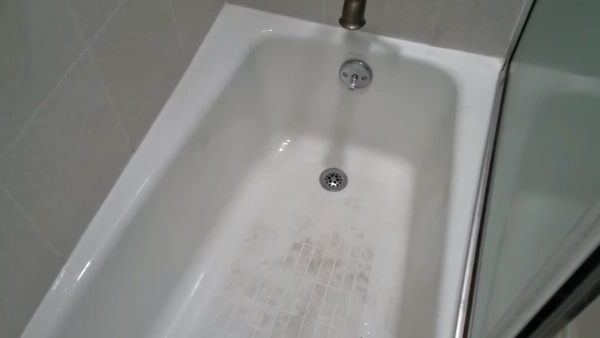
Are you seeing white spots and discoloration on your shower walls caused by calcium buildup? You can minimize calcium buildup in the tub with a few simple steps.
1. Use Low-Mineral Water for Bathing
Using low-mineral water for bathing is one way to help prevent calcium buildup in the bathtub. Low-mineral water contains lower levels of magnesium, calcium, and other minerals that can lead to mineral deposits on your shower surfaces over time.
To achieve this, you can use a filtered or reverse osmosis system to reduce the mineral content in your water supply before it reaches your faucet or install a shower filter directly onto your shower head.
2. Install a Water Softener System
Another way to reduce the risk of calcium buildup in the bathtub and shower is to install a softening system for your home’s plumbing system. A softener system helps reduce the amount of minerals present in the water used for bathing to avoid any scaling or staining from forming due to hard water deposits.
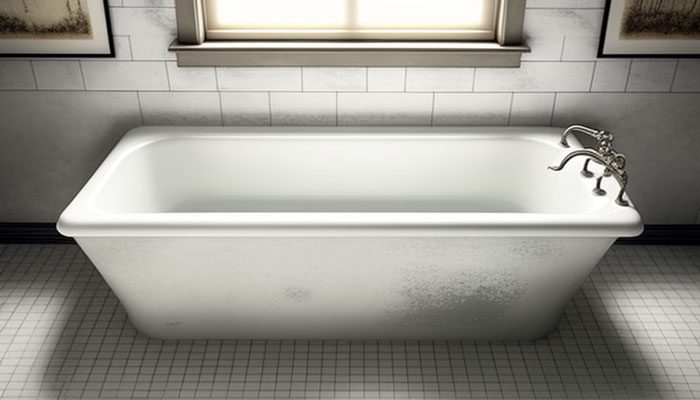
This is a great way to get rid of hard water minerals like magnesium, iron, and manganese. It does this by exchanging them with sodium ions, so the water coming out of your showerhead is much softer.
3. Spray Vinegar Solution on Your Bathtub after Bathing
If you already have some calcium build up on your bathtub, you can get rid of it by spraying a mix of vinegar and water onto its surface after every bath or shower session.
The acidic properties of vinegar help break down stubborn stains while also helping to dissolve existing mineral deposits. Be sure to wipe down the tub with a damp cloth afterwards so that no residue is left behind, then let it air dry before using it again.
4. Spread Lime Away Gel on the Wall Surfaces of Your Shower
Lime away gel is another great option for preventing calcium build-up from happening in the first place. It’s specially formulated with powerful ingredients that remove limescale without damaging surfaces like ceramic tiles or fiberglass panels found around showers and tubs.
Just be sure not to use too much as it could cause fading or discoloration over time! After applying lime away gel onto affected areas, simply let it sit for about 20 minutes before wiping off any remaining residue with a clean cloth.
What Destroys Calcium Buildup?
Many household items can destroy calcium buildups, such as white vinegar and lemon juice. Baking soda is also effective at dissolving calcium deposits. To remove calcium deposits from a bathtub, simply apply the desired cleaning solution and let it sit for a few hours before scrubbing away the residue.
How Long Does It Take for Vinegar to Dissolve Limescale?
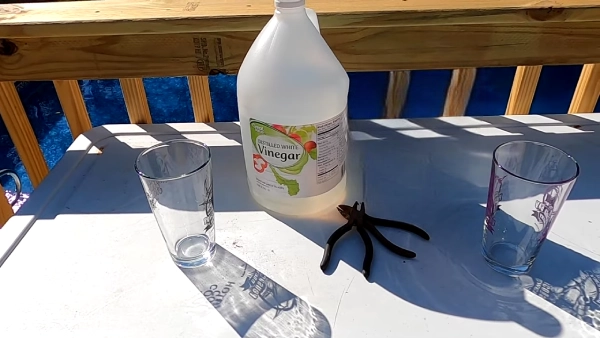
Most users agree that it usually takes at least overnight, or around 12 hours, for vinegar to dissolve limescale effectively. Some people say that it can take as little as 30 minutes, while others say that it can take up to 1-2 hours.
The exact time it takes for vinegar to dissolve limescale will depend on a number of factors, including the strength of the vinegar and the thickness of the limescale deposits.
Does Baking Soda Dissolve Calcium Deposits?
Baking soda can be used to dissolve calcium deposits. along with white vinegar. The combination of the two creates a reaction that helps to remove hard water stains such as those caused by calcium.
What Does Calcium Look Like On Bathtub?
Calcium deposits in bathtubs usually appear as chalky white spots or streaks on the surface of the tub’s enamel or porcelain coating. In some cases, they may also appear as the white or yellowish powdery residue left behind after wiping down the tub’s surface.
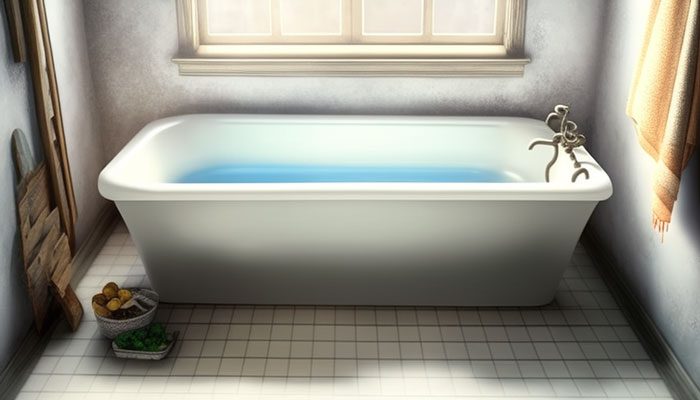
Do Calcium Deposits Ever Go Away from the Bathtub?
Calcium deposits can be difficult to remove forever from a bathtub as they tend to come back after baths or showers. These deposits are caused by minerals in hard water that accumulate over time.
The best way to get rid of these deposits is by regularly cleaning the bathtub with a limescale cleaner for tougher stains. You can also use a mixture of vinegar and water for an effective solution.
Eliminate Calcium Buildup from Your Bathtub Quickly and Easily
Removing calcium buildup from your bathtub does not have to be an intimidating task. With the right approach and natural ingredients, you can easily restore your tub back to its former glory in no time at all.
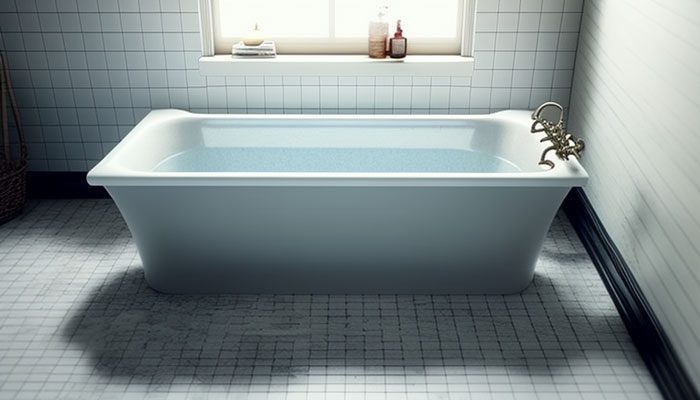
White vinegar, dish soap with vinegar, baking soda with vinegar, and limescale remover products are specifically designed for this purpose. Take some preventive measures, such as using low-mineral water or installing a softener system to reduce the amount of calcium deposits that form over time in your shower or bathtub.

